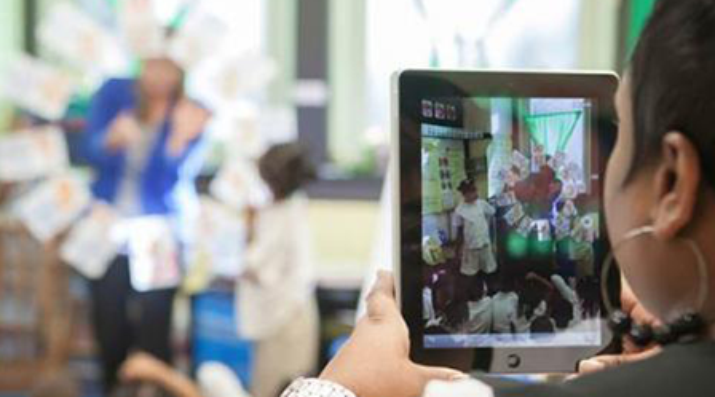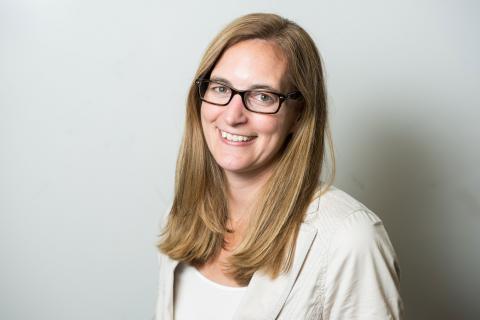New Designs for School
Dollars & Sense: Analyzing Financial Decisions in NGLC K-12 Breakthrough Model Schools
Topics

We’ve all had the experience of truly purposeful, authentic learning and know how valuable it is. Educators are taking the best of what we know about learning, student support, effective instruction, and interpersonal skill-building to completely reimagine schools so that students experience that kind of purposeful learning all day, every day.
Twenty NGLC breakthrough model schools are participating in a financial study led by the Center for Reinventing Public Education (CRPE) examining their budgets, operations, and sustainability. CRPE just released a brief offering early lessons drawn from the first year of that study, Is Personalized Learning Meeting Its Productivity Promise? Early Lessons from Pioneering Schools, authored by Larry Miller, Betheny Gross, and Robin Lake.
Central Findings
#1. The eight schools included in the first year of the study (all new charter schools) missed their projected revenues and had to make important decisions about where to cut their budgets in their first year of operation. They fell short in both public funding (due to lower-than-expected enrollment) and philanthropic funding.
Availability of adequate facilities on a timely basis and parents’ unfamiliarity with new school models were cited by school administrators as reasons for the low enrollment, according to Scott Milam of Afton Partners, a partner in the CRPE study, in a related blog post back in January (Afton Partners also reviewed the breakthrough models’ financial plans during the grant application process).
The advice from CRPE for new school startups embracing personalized, blended, competency-based models is this:
 Invest more in student recruitment efforts.
Invest more in student recruitment efforts.
 Develop a worst-case scenario budget—anticipate budget shortfalls and proactively decide where to cut expenditures.
Develop a worst-case scenario budget—anticipate budget shortfalls and proactively decide where to cut expenditures.
#2. The eight schools tended to cut their technology budgets, some quite significantly, to cover the early revenue shortfall. At the same time, five of the schools spent more than projected on personnel. This result may seem counterintuitive for models that are leveraging technology to personalize students’ learning experiences. But it’s not all that surprising, really. Secondary schools need teachers certified in each subject area whether the school serves 20, 100, or 2,000 students.
And on the tech side, NGLC schools became savvy with their investments. One school saved over $100,000 by switching from MacBook Airs to Chromebooks; plus, when the school gave teachers the ability to buy their own applications and software, the principal reported that quality improved and costs were contained.
At the same time, though, CRPE did find examples of tech cuts that shifted the schools’ academic models, at least in the short-term. For example, one school defunded the dashboard software they had previously invested in. The loss prevented teachers from seeing performance information from multiple online content providers in a single snapshot, and thereby reduced their ability to apply that knowledge to their instruction.
For a more nuanced picture, see the blog post from Scott Milam which breaks down the shifts in technology and personnel spending that the grantees made (e.g., administrative vs. instructional staff; infrastructure and devices vs. software).
Additional advice from CRPE on reducing tech costs includes these insights:
 Demand more from vendors—establish performance requirements, negotiate bulk license fees, initiate a trial period.
Demand more from vendors—establish performance requirements, negotiate bulk license fees, initiate a trial period.
 Consider BYOD (Bring Your Own Device) or user fee strategies.
Consider BYOD (Bring Your Own Device) or user fee strategies.
 Train students or hire AmeriCorps staff to provide tech support.
Train students or hire AmeriCorps staff to provide tech support.
CRPE also recommended ways to save on personnel costs when the budget demands it.
In the end, though, this finding suggests to me that the eight breakthrough schools recognize the invaluable and essential contribution of teachers to provide personalized learning. Everything else, including the technology, is secondary.
An Emerging Financial Template?
Hopefully these schools will realize their full financial potential in the next few years so that their academic models can be implemented in ways that are more fully aligned to their design. CRPE reports that seven of the eight schools balanced their budgets in their first year, but five schools will continue to have structural deficits in the long-term. These schools intend to close the gap by increasing the student-teacher ratio. This also makes sense to me: if they are investing more heavily in personnel now, their student-teacher ratios should increase as they become more aligned with their model down the road.
Next year’s analysis from CRPE will include more schools, including district schools, and can offer lessons based on a wider set of school models. NGLC grantees didn’t have a financial template to work from—their ideas for doing school differently are truly breakthrough—so we need to learn from them to create the alternative financial models that are both sustainable and support transformative learning models.
Visit the K-12 breakthrough model grant recipients pages on our website to learn more about their academic, organizational, and financial models.
Photo at top courtesy of LEAP Innovations, (c) 2014.




